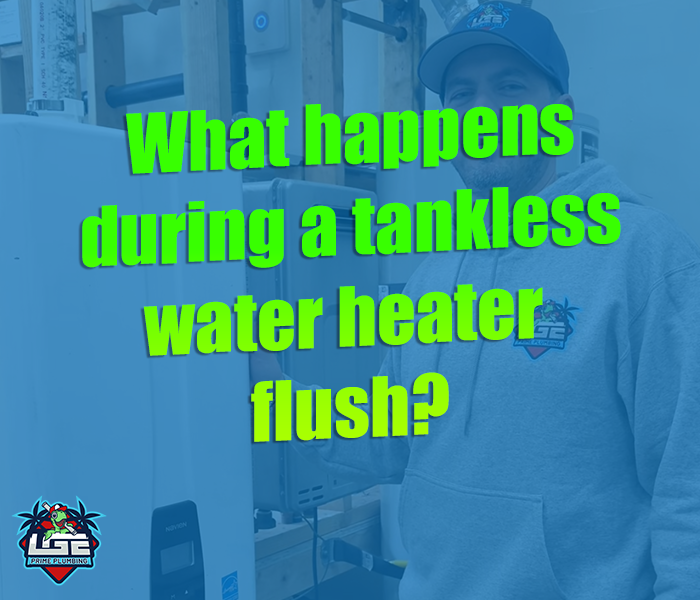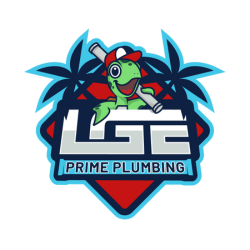What happens during a Tankless Water Heater Flush?
Why tankless water heater maintenance Is important
Tankless water heaters are a smart choice. They give you endless hot water and can last 20 years or more. But just like any system in your home, they need regular maintenance to keep working properly.
Over time, minerals like calcium and lime build up inside the heater’s small water channels. This is common if you live in an area with hard water, like many parts of San Diego.
When scale collects, your system has to work harder. That means it uses more energy, your bills go up, and the heater’s parts wear out faster. Too much buildup can also cause temperature swings, trigger error codes, or damage the unit completely.
Routine maintenance — especially flushing — removes this buildup. It keeps your system running efficiently, protects your investment, and helps you avoid expensive repairs down the road.
Contents
What actually happens during a tankless water heater flush?

A professional flush is more than just running water through the system. Here’s how it usually goes when a plumber does it.
How often should you flush a tankless water heater?
Most manufacturers recommend flushing your tankless water heater at least once a year. If you live in an area with hard water, you might need it every six to twelve months to keep scale under control.
Regular flushing helps prevent bigger problems and keeps your heater running like it should.
Signs you might need a tankless water heater flush sooner
Watch for these clues that it’s time to call a plumber:
- • Your water goes from hot to cold and back again.
• The unit makes strange noises, like popping or rumbling.
• You see an error code on the display.
If you notice any of these, your system probably has more scale than it should.
What are the benefits of regular tankless water heater flushing?
Flushing your tankless water heater does more than protect the unit. It keeps your whole home running smoothly and can save you money.
Lower energy bills and more stable hot water
A clean heater works more efficiently. It heats water quickly and evenly, so you’re less likely to deal with sudden cold spells or long waits for hot water. You’ll also spend less on utilities since the system doesn’t have to work overtime.
Longer life for tankless water heater
Scale buildup stresses your heater’s parts. Flushing reduces that strain, which means fewer repairs and a longer life for your system.
Better warranty coverage and fewer surprise costs
Many manufacturers require proof of regular maintenance to keep the warranty valid. Routine flushing helps protect that coverage and avoids costly surprises later.
Can you flush a tankless water heater yourself?
Yes, it’s possible to do it yourself. Many homeowners pick up a flush kit and a descaling solution.
But here’s a serious word of caution: doing it yourself comes with real risks, and it could void your warranty. Most manufacturers require flushing and other maintenance to be done by a licensed professional. If something goes wrong later and they see it was self-serviced, you might be stuck paying out of pocket for major repairs.
DIY flushing can also lead to several problems, including:
• Incorrect Valve Handling – Mishandling the shutoff or isolation valves can cause leaks or even damage your plumbing system.
• Using the Wrong Solution – Harsh chemicals can eat away at the heat exchanger, leading to expensive damage.
• Incomplete Flushing – If you don’t flush thoroughly, scale deposits might stay behind and continue to clog your system.
• Leaks or System Errors – Improper reassembly after flushing can cause leaks, ignition failures, or error codes.
• Missed Anode Rod Issues – If the anode rod is already worn out, a flush won’t solve corrosion problems, and you might miss the warning signs.
That’s why many homeowners prefer to call a professional. A licensed plumber will flush your system safely, check the anode rod and other critical parts, and provide proper documentation so your warranty stays intact.
Our Team Is Here For You!
VIdeo walk through : Tankless water heater flush
LGE Prime Plumbing
Ready to sedule your tankless water heater flush?
Our team is here to help. We handle tankless water heater maintenance all across San Diego, Chula Vista, Bonita, and nearby areas.
We’ll clear out the scale, check your system, and make sure you have reliable hot water whenever you need it. Call us today or book an appointment online to keep your tankless water heater running at its best.
FAQs About

